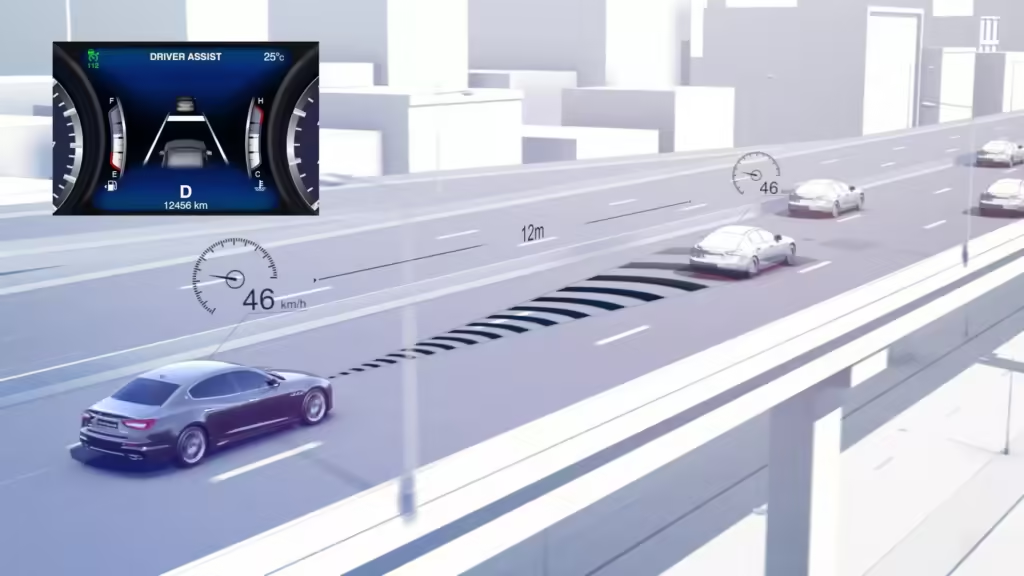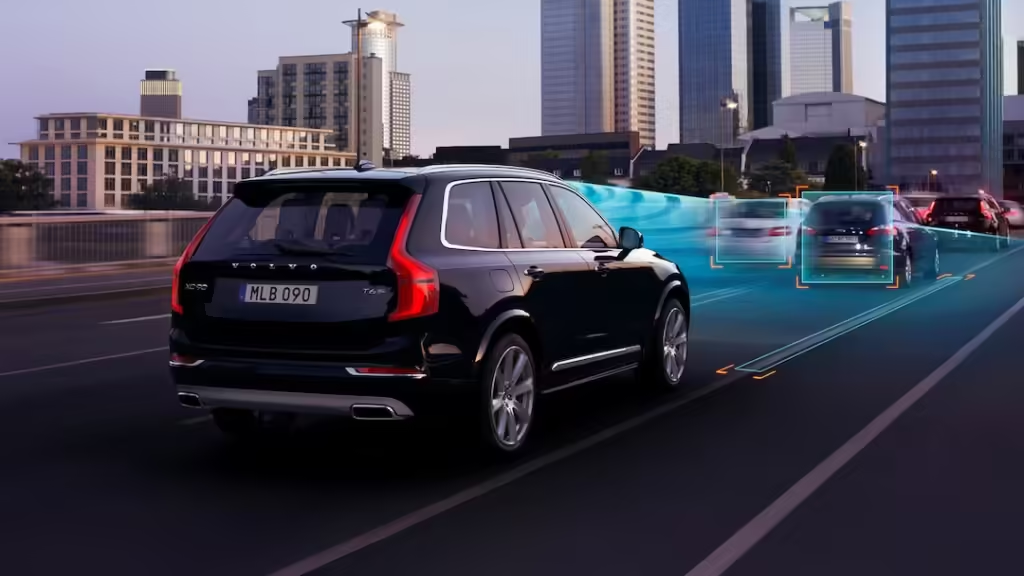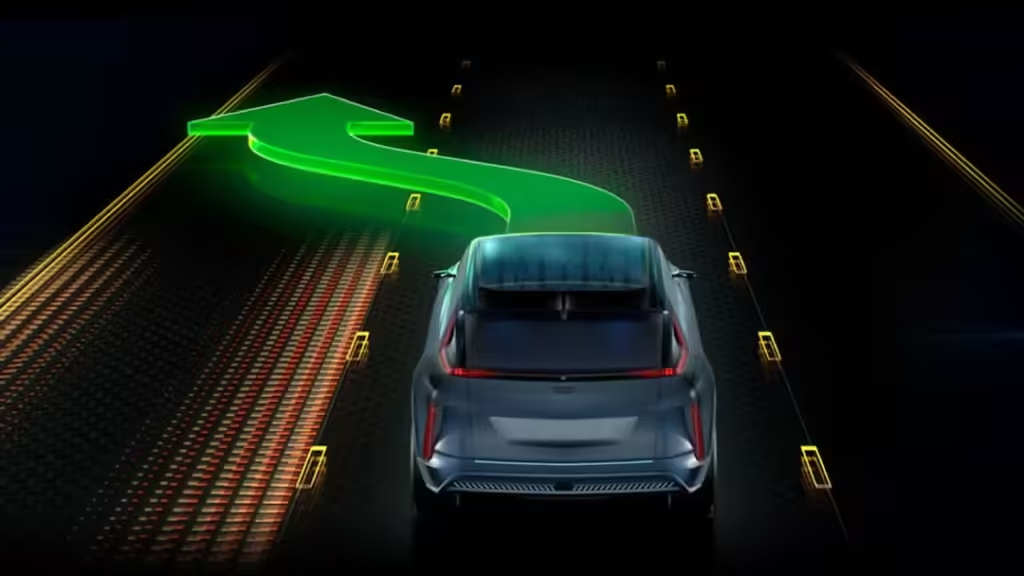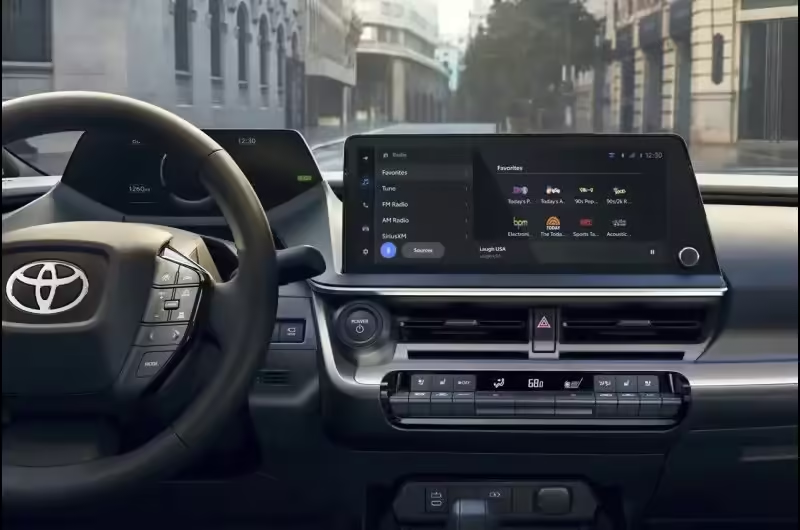Adaptive Cruise Control is transforming the driving experience in today’s world, where road safety and driving comfort are of utmost importance, modern cars come equipped with features designed to make driving easier, safer, and more enjoyable. One such feature is Adaptive Cruise Control (ACC). This technology is rapidly gaining popularity among Indian drivers, and for a good reason. It not only improves the driving experience but also makes long journeys less tiring and safer.
In this blog, we will delve deep into how Adaptive Cruise Control works, its benefits, and its significance in Indian driving conditions. We’ll also explore why this car technology in India is becoming a must-have feature for those looking to upgrade their driving experience.
What is Adaptive Cruise Control?
At its core, Adaptive Cruise Control is an advanced form of traditional cruise control. While traditional cruise control allows drivers to maintain a constant speed without having to keep their foot on the accelerator, Adaptive Cruise Control takes this a step further. It automatically adjusts the car’s speed to maintain a safe distance from the vehicle in front.

For instance, if you’re driving on a highway using Adaptive Cruise Control and the car ahead slows down, ACC will detect this and reduce your car’s speed accordingly. Once the road is clear again, the system will bring the car back up to the preset speed.
This makes Adaptive Cruise Control particularly useful in Indian driving conditions, where sudden stops and unpredictable traffic are common.
How Does Adaptive Cruise Control Work?
Adaptive Cruise Control relies on sensors, radar, and cameras placed around the car. These sensors constantly monitor the road ahead, detecting the speed and distance of the vehicle in front. The system then automatically adjusts the speed of your car to maintain a safe distance.


In most cars equipped with Adaptive Cruise Control, you can set the desired speed and the following distance.

The ACC system will do the rest, adjusting your car’s speed in real-time based on traffic conditions.Key Components of Adaptive Cruise Control:
- Radar Sensors: These are typically located at the front of the car and are responsible for measuring the distance between your vehicle and the one in front.
- Cameras: High-quality cameras help detect objects on the road and assess the traffic situation.
- Braking System: ACC can automatically apply the brakes if the vehicle ahead suddenly slows down or stops.
- Throttle Control: Once the road clears, the system re-engages the throttle to bring the car back to the set speed
Benefits of Adaptive Cruise Control in India
The implementation of Adaptive Cruise Control offers several benefits, especially on Indian roads, where traffic patterns can be unpredictable:
1. Reduces Driver Fatigue
Driving long distances on highways can be tiring, especially in stop-and-go traffic. Adaptive Cruise Control allows you to take your foot off the pedals while still maintaining control of the vehicle, making the journey less exhausting.

2. Improves Safety
One of the biggest advantages of Adaptive Cruise Control is that it improves road safety. By automatically maintaining a safe distance from the vehicle in front, it helps prevent accidents caused by human error, such as delayed reaction times.

3. Helps in Congested Traffic
In Indian cities, traffic congestion is a common issue. Adaptive Cruise Control helps in such situations by automatically adjusting the car’s speed, making stop-and-go traffic less stressful for drivers.
4. Enhances Driving Comfort
For drivers who spend a lot of time on the highways, Adaptive Cruise Control can be a game-changer. It allows you to maintain a steady speed without constantly adjusting for slower-moving vehicles, providing a more relaxed driving experience.
Adaptive Cruise Control vs. Traditional Cruise Control
You might wonder how Adaptive Cruise Control differs from traditional cruise control. While both systems allow you to set a desired speed, Adaptive Cruise Control offers much more in terms of flexibility and safety.Traditional cruise control maintains a constant speed but does not adjust to traffic. In contrast, Adaptive Cruise Control automatically reduces speed when it detects slower vehicles ahead, ensuring you maintain a safe distance without any input from the driver.
This makes Adaptive Cruise Control far more than useful in Indian driving conditions, where traffic is often unpredictable, and maintaining a constant speed isn’t always possible.-
How Does Adaptive Cruise Control Handle Indian Roads?
Given the unique nature of Indian driving conditions, with their mix of highways, crowded city streets, and rural roads, you might wonder how well Adaptive Cruise Control performs in India.Thankfully, the technology is versatile enough to adapt to these challenges. Here’s how it handles common Indian driving experiences:
1. Highways
On Indian highways, where traffic moves at higher speeds, Adaptive Cruise Control is incredibly useful. It allows drivers to maintain a safe speed and distance without the constant need to adjust due to slower vehicles.
2. City Traffic
In crowded urban areas, Adaptive Cruise Control can be helpful in managing stop-and-go traffic. While it won’t completely replace the need for manual driving in congested areas, it can make the experience much smoother by automatically adjusting speed when necessary.
3. Rural Roads
On less predictable rural roads, Adaptive Cruise Control may be less effective if the roads are narrow or poorly maintained. However, on straight and open rural roads, it can still provide a more relaxed driving experience.—Best Cars with Adaptive Cruise Control in IndiaAs more car manufacturers in India recognize the value of Adaptive Cruise Control, several models now offer this feature. If you’re looking to buy a car equipped with ACC, here are some of the top choices in India:
- Tata Safari
- Hyundai Tucson
- MG Hector Kia Seltos
- Jeep Compass
These cars come with Adaptive Cruise Control as part of their Advanced Driver Assistance Systems (ADAS), making them ideal for drivers looking for both comfort and safety.
The Future of Adaptive Cruise Control in India
The adoption of Adaptive Cruise Control in India is still in its early stages, but it’s growing rapidly. As more cars come equipped with this technology, and as drivers become more aware of its benefits, Adaptive Cruise Control is expected to become a standard feature in many new models.
Furthermore, as autonomous driving in India develops, ACC will likely play a key role in the transition to semi-autonomous and fully autonomous vehicles, offering a glimpse into the future of driving in India.
Conclusion
In conclusion, Adaptive Cruise Control is more than just a luxury feature—it’s a technology that can significantly enhance your driving experience. Whether you’re driving on highways or navigating through city traffic, ACC provides safety, comfort, and convenience.
For Indian drivers, especially those who frequently embark on long journeys, Adaptive Cruise Control can reduce fatigue, improve safety, and make driving far more enjoyable. If you’re in the market for a new car, consider one with Adaptive Cruise Control—it’s an investment in your comfort and safety on the road.
At My Car Wisdom, we help you make informed decisions when choosing the perfect car. Whether you’re a first-time buyer or an experienced car enthusiast, we provide expert reviews, tips, and in-depth knowledge to guide you. Explore the latest models, understand key features, and compare options to find the best fit for your needs.
Ready to find your next dream car? Let My Car Wisdom steer you in the right direction—start your journey with us today.
Frequently Asked Question’s
1. What is Adaptive Cruise Control, and how does it work?
Adaptive Cruise Control (ACC) is an advanced feature that automatically adjusts your car’s speed based on the traffic ahead. Unlike traditional cruise control, which maintains a constant speed, ACC uses radar and cameras to monitor the distance between your vehicle and the one in front. If the vehicle ahead slows down, ACC reduces your car’s speed to maintain a safe distance. Once the road clears, ACC accelerates your car back to the preset speed. This feature is designed to enhance safety and comfort, especially during long highway drives or in stop-and-go traffic.
2. Is Adaptive Cruise Control suitable for Indian driving conditions?
Yes, Adaptive Cruise Control is becoming increasingly relevant in India. Indian roads are known for their unpredictable traffic and frequent stops, making ACC a valuable feature. On highways, it allows drivers to maintain a safe distance from other vehicles without manually adjusting the speed. While it may not be as effective in heavily congested city traffic or poorly maintained rural roads, ACC still provides significant benefits in most Indian driving scenarios, particularly for long-distance travelers and highway commuters.
3. Which cars in India come with Adaptive Cruise Control?
Several cars in India now offer Adaptive Cruise Control as part of their safety package. Some popular models equipped with ACC include the Tata Safari, Hyundai Tucson, MG Hector, Kia Seltos, and Jeep Compass. These vehicles typically come with Advanced Driver Assistance Systems (ADAS), which include other safety features like lane-keeping assist and automatic emergency braking. As more car manufacturers recognize the demand for this technology, the number of cars with ACC in India is expected to grow rapidly.
Raja Yadav, the content writer at My Car Wisdom, brings a unique voice and style to our blog. With a knack for storytelling and a keen eye for detail, Raja ensures that every piece of content is informative, engaging, and easy to understand. His focus is on delivering high-quality articles that cater to both novice car owners and seasoned automotive enthusiasts.




